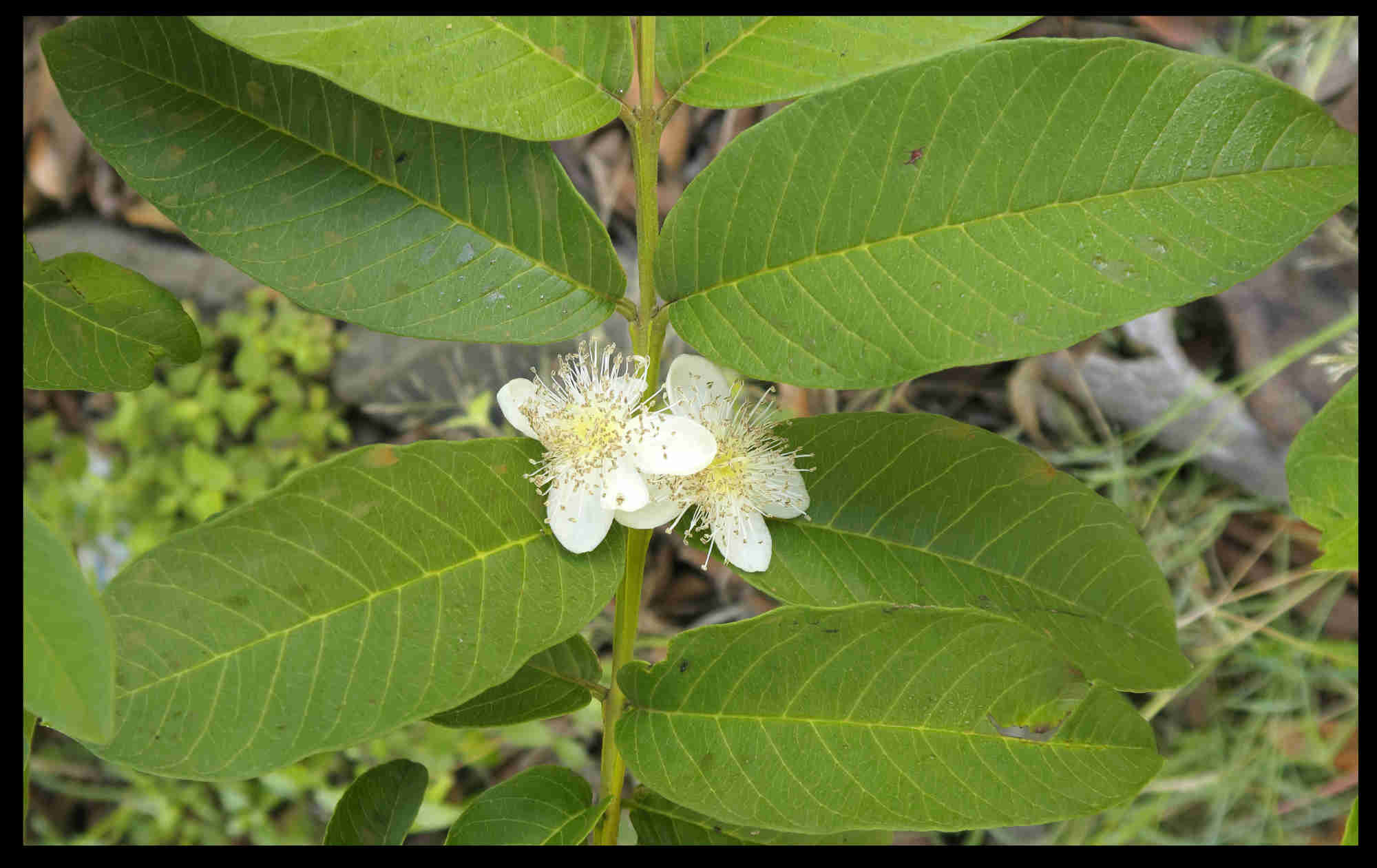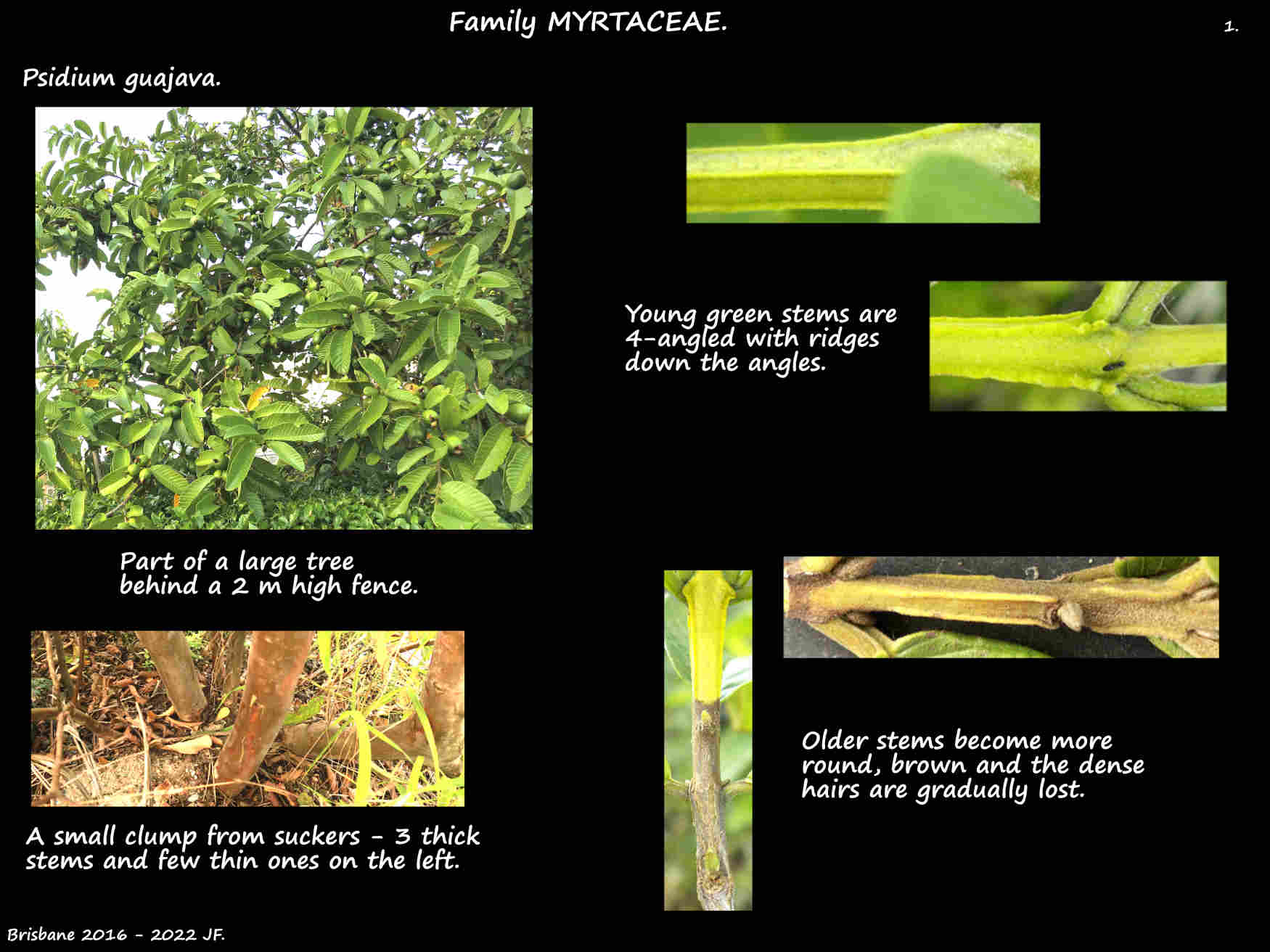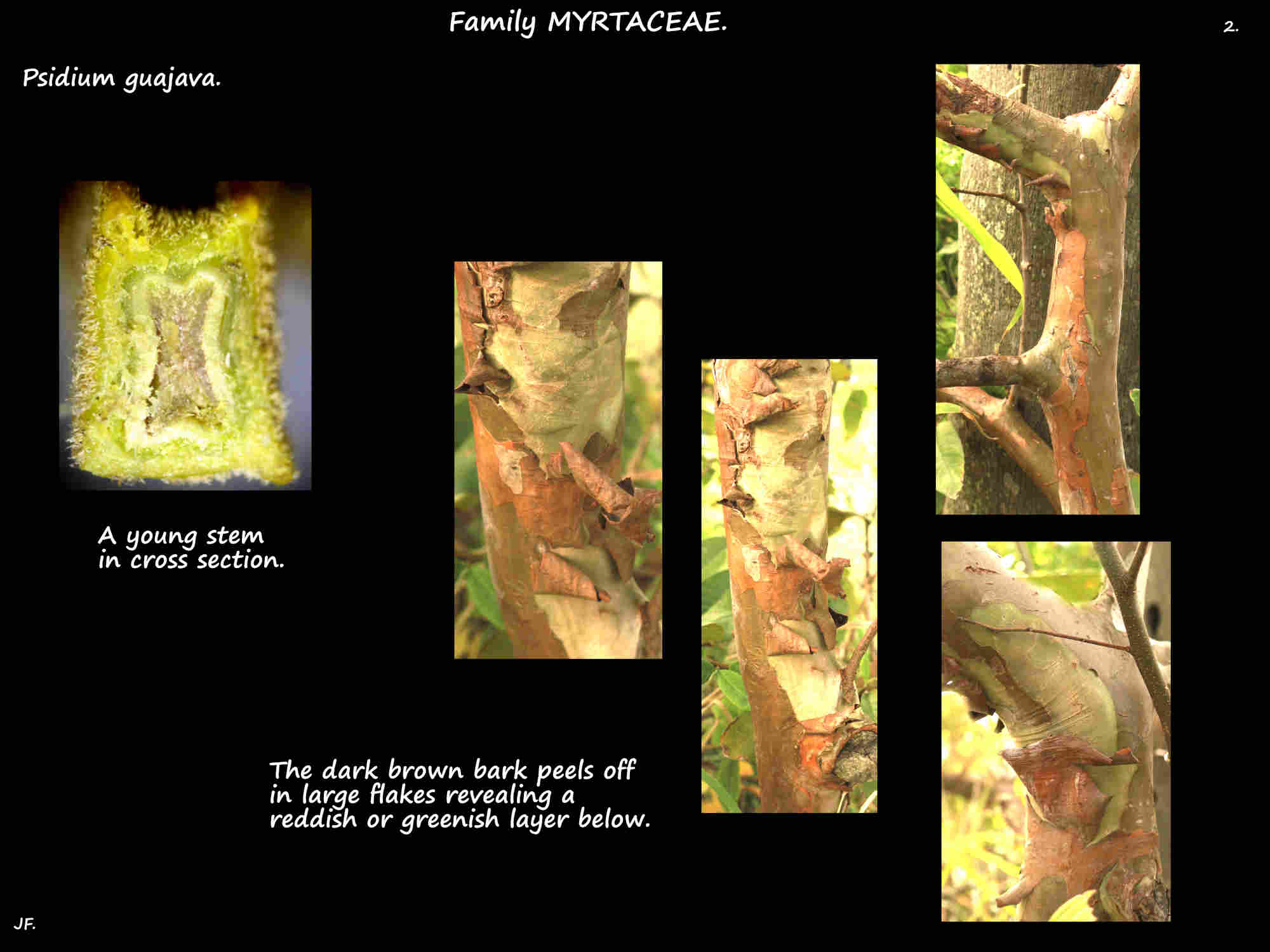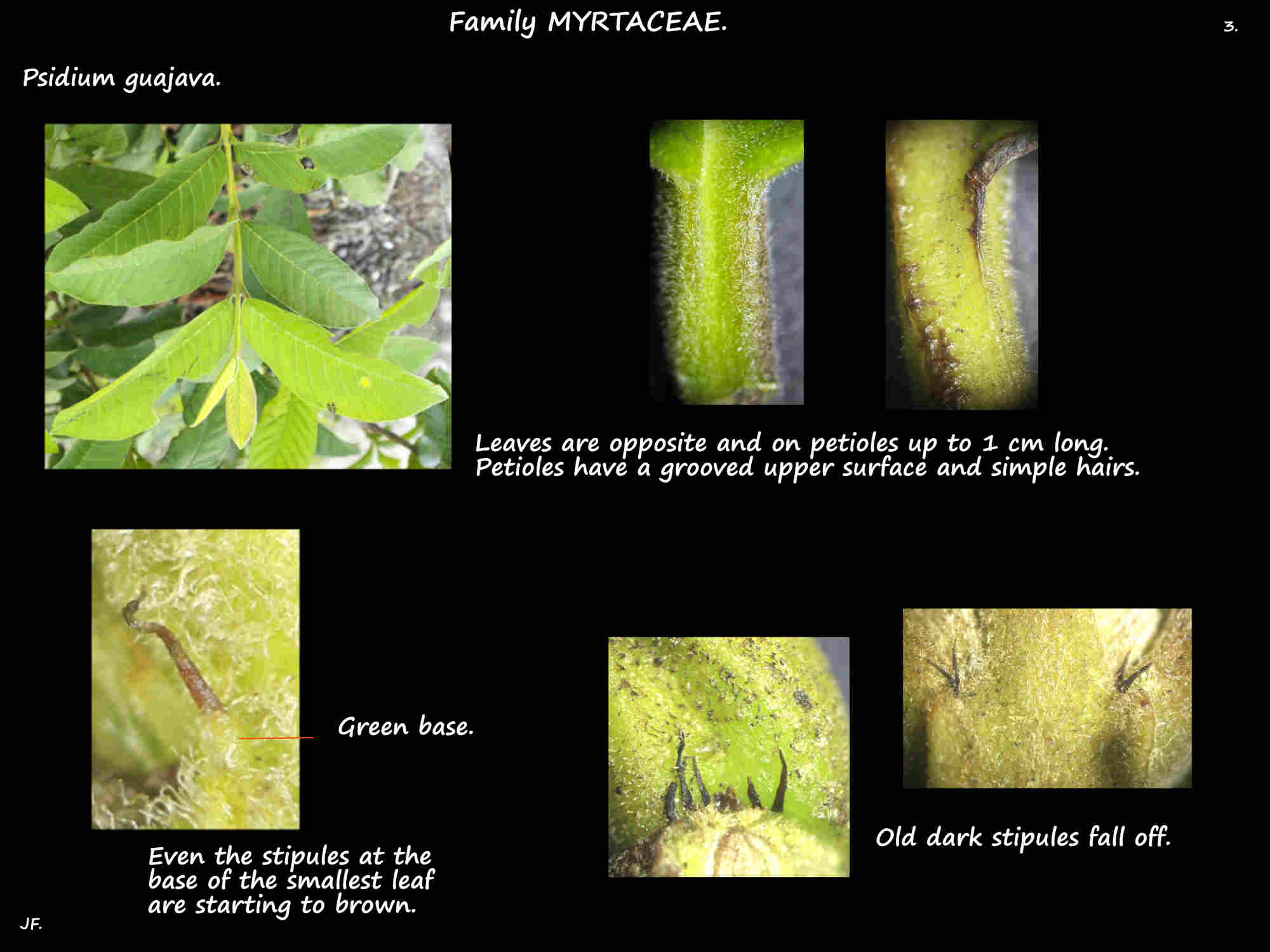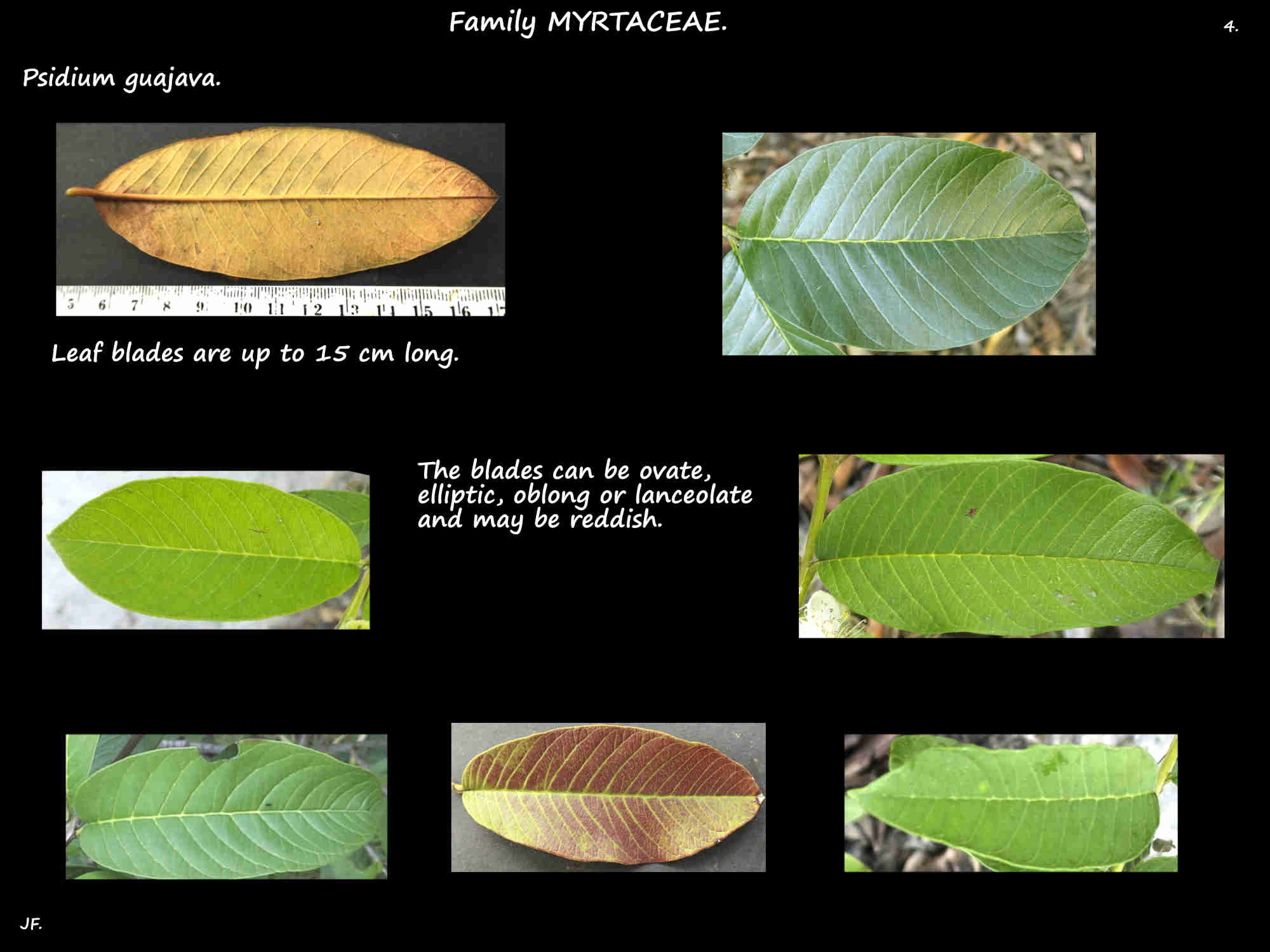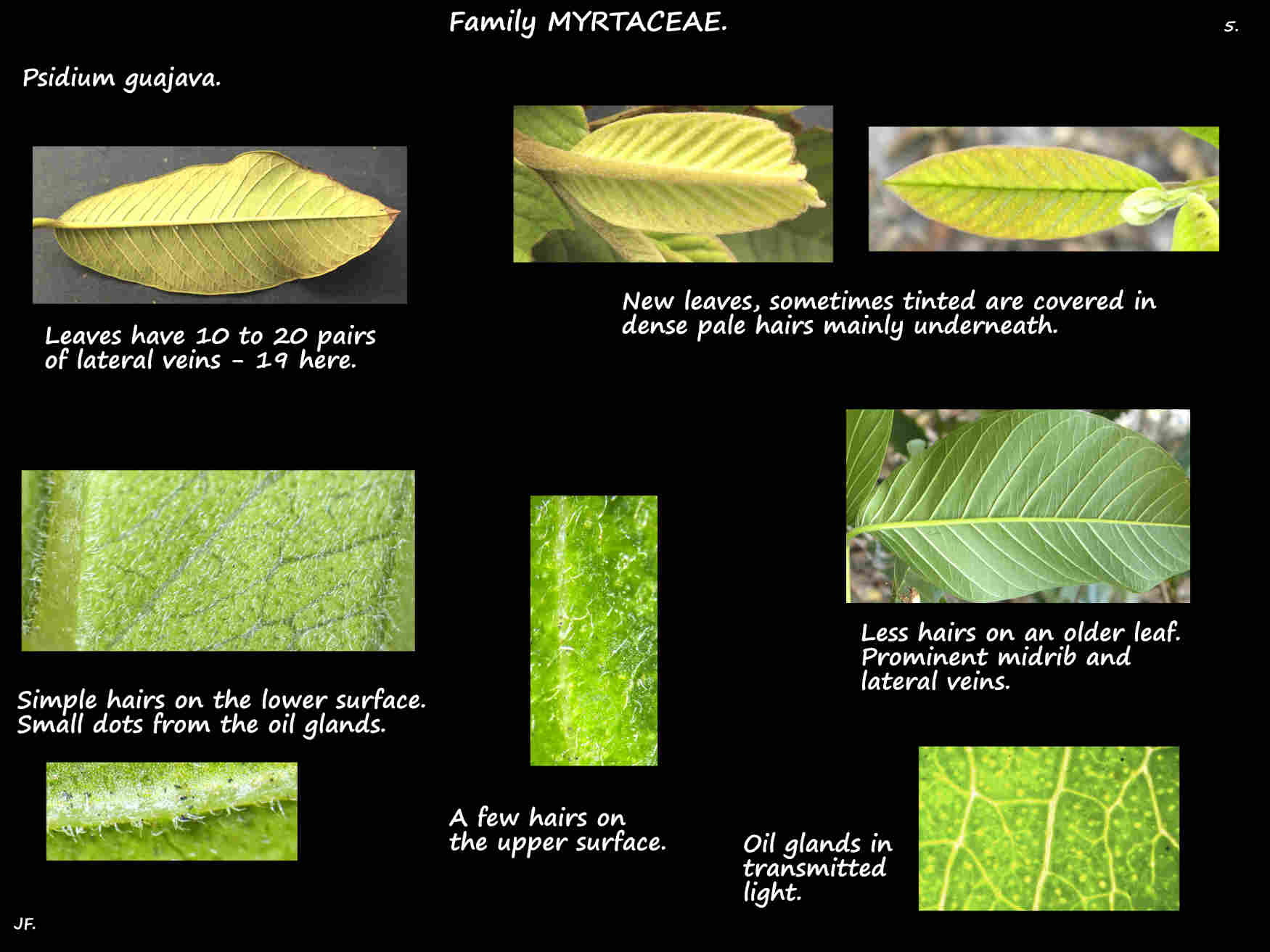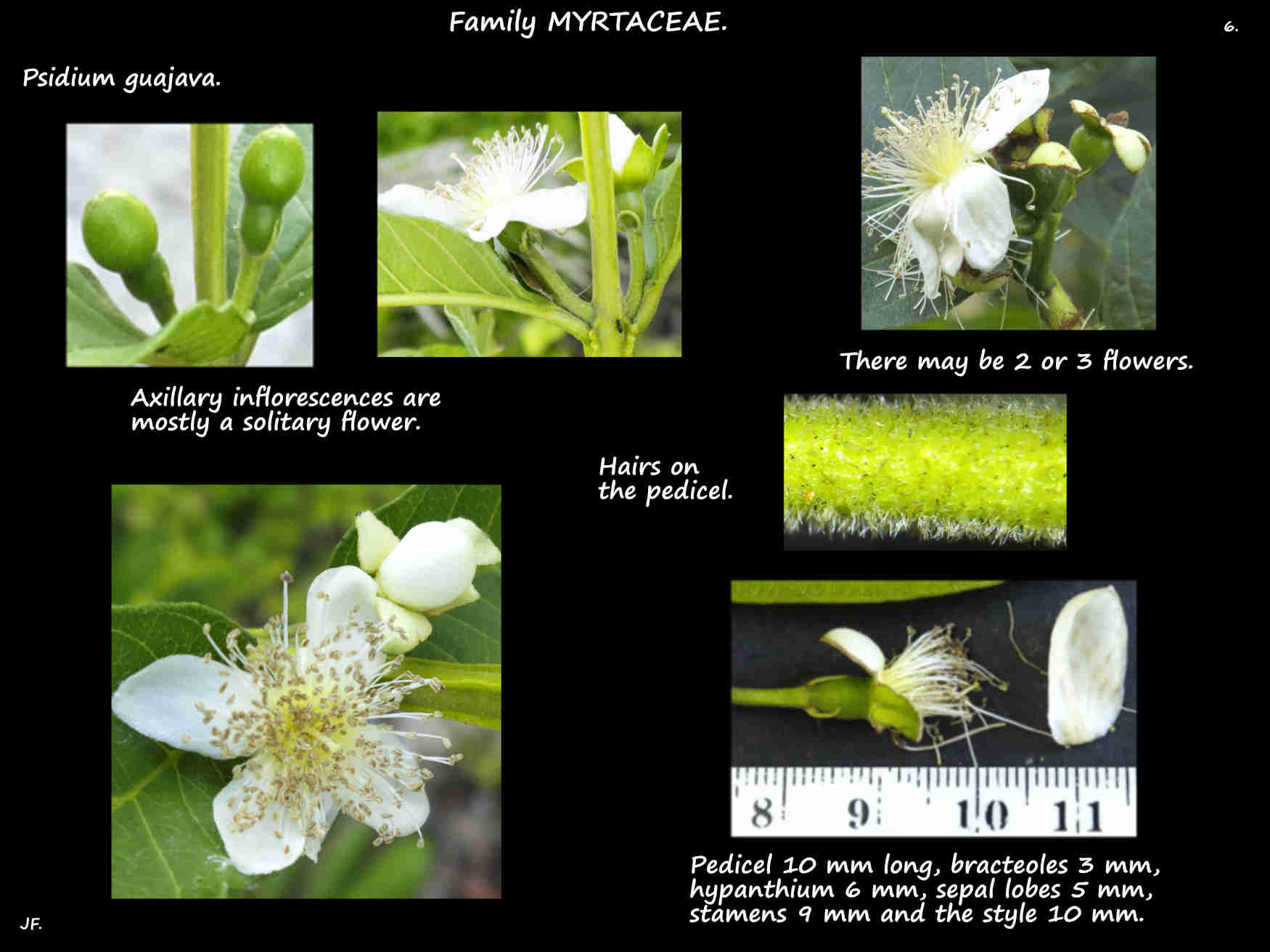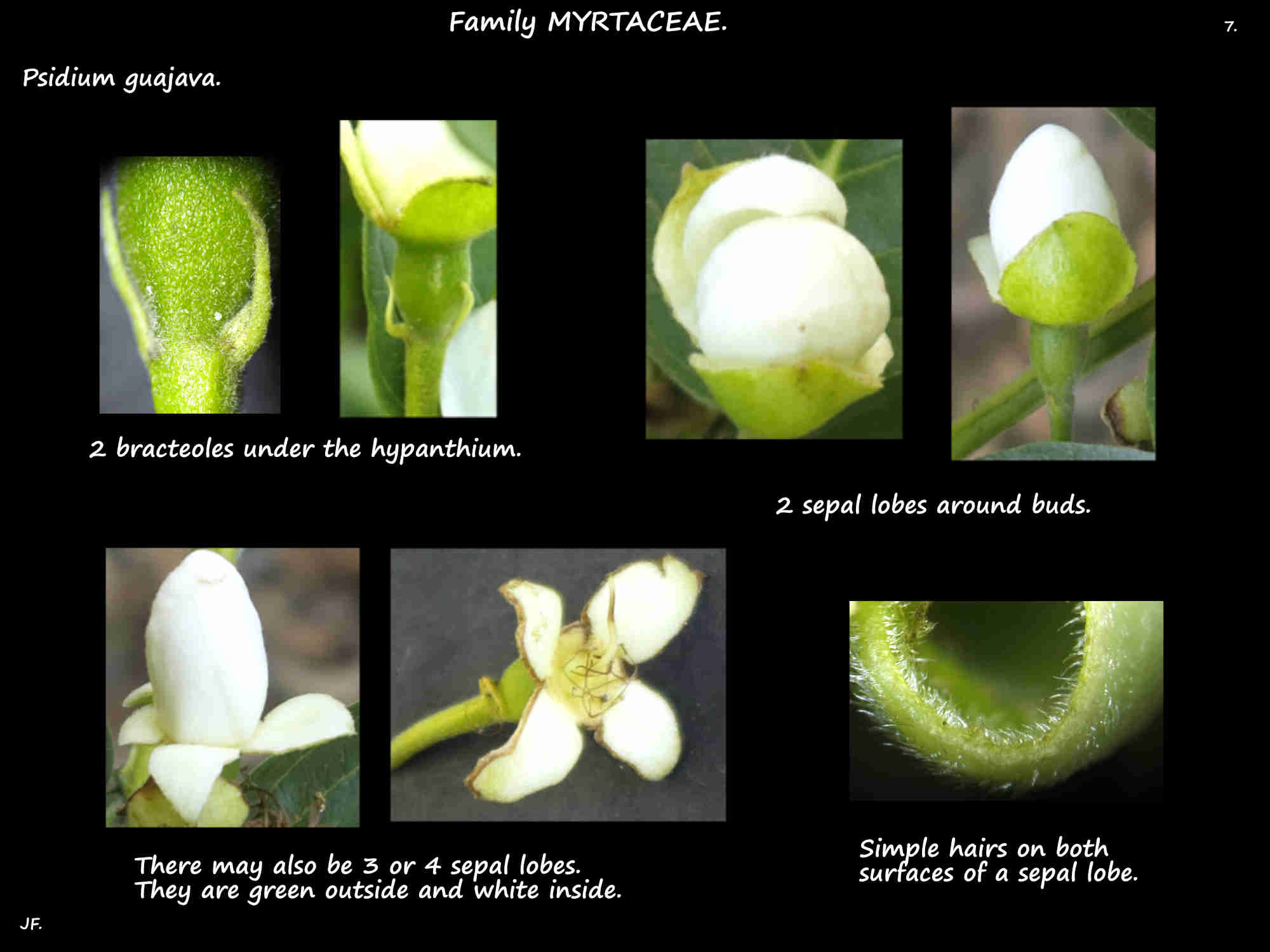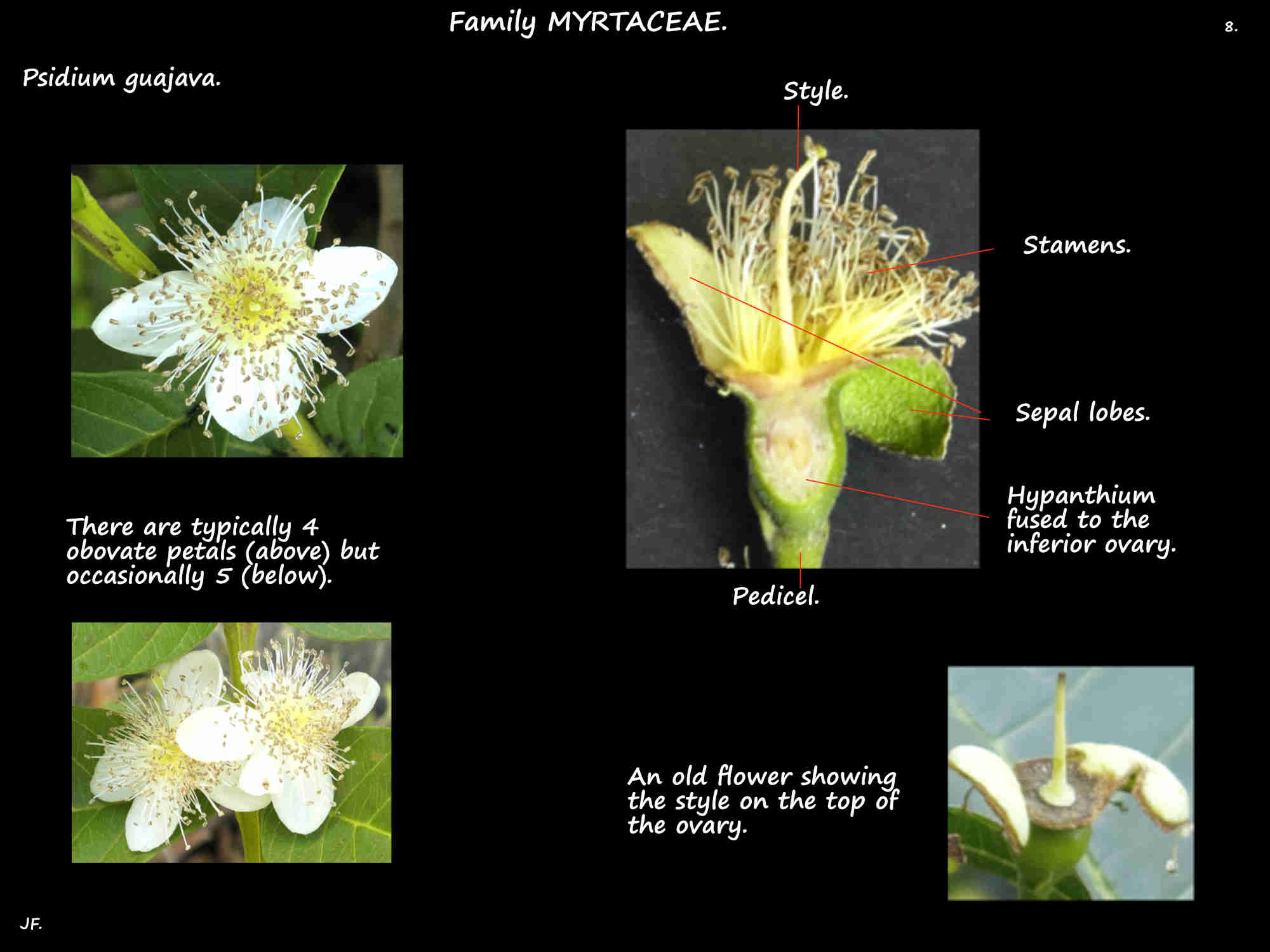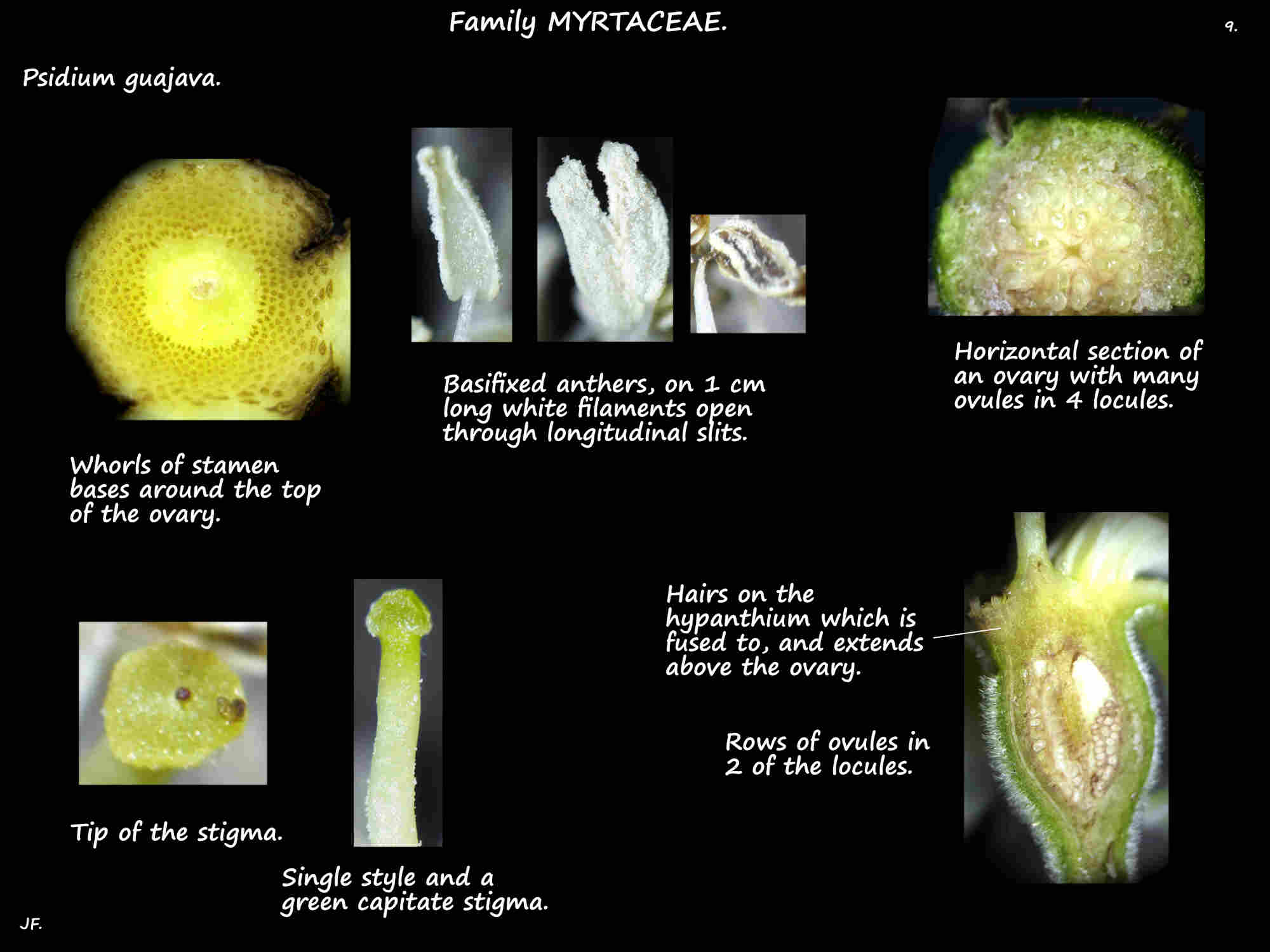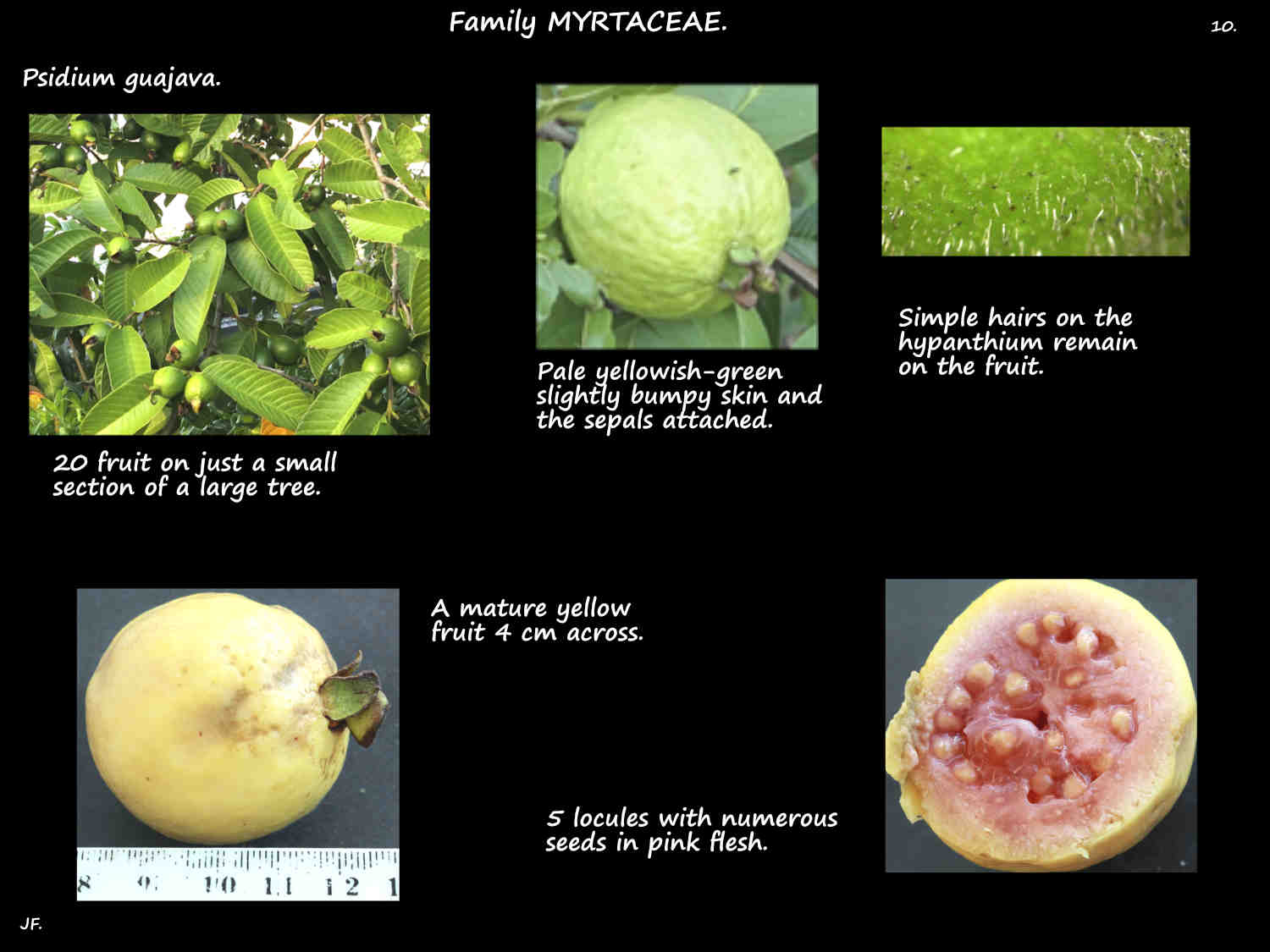Psidium guajava.
The Common, pear or yellow guava is naturalised in eastern Queensland.
Commonly seen in Brisbane it has become a weed.
They are evergreen, much-branched shrubs or small trees with a thick trunk.
Often around 3 to 5 m high they can be up to 10 m.
They branch from the base and can sucker from the roots forming dense clumps.
The smooth dark or reddish-brown bark peels off in thin flakes.
The trunks and older stems become mottled with the lower layers being pale reddish or greenish brown.
The young stems are 4-angled in cross section and older brown ones are round.
Young ones are green, reddish or yellow and have simple hairs.
The simple opposite leaves are on a hairy petiole up to 1 cm long.
Young leaves may have a reddish tint.
The lanceolate, elliptic, ovate or oblong blades are up to 15 cm long by 7 cm wide
The tip can be rounded or pointed, the base rounded or wedge-shaped and the edge is smooth.
They are mostly a dull green, slightly leathery and have translucent oil glands.
The midvein and the 10 to 20 pairs of lateral veins are all prominent on the lower surface.
There are simple hairs on the lower surface while the upper surface may have none or just a few.
Inflorescences are axillary near the end of the main stem and short side branches.
There is typically only a single flower but there can be 2 or 3.
The flowers are on a hairy pedicel up to 2.5 cm long which has bracteoles on it.
The bisexual flowers are up to around 3 cm across and 2 cm long.
The hypanthium is formed from the fused bases of the sepals and petals.
The 2 to 4 irregular sepal lobes on the rim are green outside and white inside.
There are 4 or 5 (10) obovate white petal lobes on the hypanthium.
Sepals and petals have simple hairs.
The many white stamens, around 1 cm long are in whorls.
The inferior ovary is fused to the hypanthium which extends above it.
Each of the 4 or 5 locules has numerous ovules.
The single style, with a green stigma is slightly longer than the stamens.
Many plants seen are cultivars and their fruits differ in shape, size and colour.
Up to 12 cm long and 10 cm across they can be ovoid, pear-shaped or round.
The surface can be smooth, bumpy, rough or hairy and the sepal lobes remain attached.
From dark green they mature to pale or dark yellow sometimes with a red tinge.
The flesh can be white, cream, yellow, pink, red or orange.
There are a few to many yellowish seeds that are commonly hard and kidney-shaped.
J.F.
